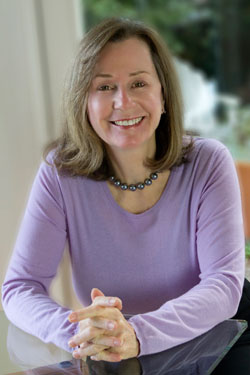When meeting Natasha, photographer Rick Smolan never imagined she’d be an emotional thread of continuity for his life. Human stories take unexpected turns, especially beginning in 2021 next year.
I’ve got your back and you’ve got mine. That’s a mighty welcome feeling as we enter 2009. Why? Because, more than any of the last 25 years, 2009 will crackle with change, unexpected loss and fresh opportunities to be there for each other.
Consequently, prepare by picturing your Circles of Connection. On whom can you most depend and how? What can you ask of each other?
It’s time to:
• Hone your differentiating mastery for a more fulfilling life.
• Be more specifically, continuously helpful in your tribes.
To practice your greatest talents more often and maximize your value for and with others, visualize a set of circles of relationships, with the strongest connections in your inner circle and the weaker ties further out. Here’s the rewards for picturing them, then the plan for identifying those circles.
First the rewards. Circles …
1. Create a context for your life …
2. That enables you to make wiser choices with …
• more grace towards yourself and others, and
• less stress or regret.
3. So you can be …
• less rushed and more focused.
• able to accomplish “first things first.”
4. Use your best talents more often to hone them sooner (10,000 rule).
5. Provide help that is appreciated and often reciprocated.
6. Collaborate in ways that use best talents – and benefit all participants.
Now, the plan – picturing your circles.
In light of your…
• top two goals (one for work and one for life) for 2021.
• two kinds of resources – yours and those you can attract from others.
… what is your “first things first” plan for each month? What tasks will you do “first thing” each week, each day … each hour?
To become higher-performing and happier – with others, see how you want to involve them in the next chapter of the adventure you want for your life story in 2009.
Picture your personal circles in a more concrete way using Christopher Allen’s helpful template. When done, consider people you’d like to move to a closer circle or further out or add to a circle. How will you make it more likely to happen?
(I add a first category to Allen’s four circles)
0. My Main Friend
To whom would you turn first for any kind of help, sympathy, celebration or other need to connect? (How many would not turn to a spouse, other kind of partner or family member first?)
1. The Support Circle
Any time, night or day, you can rely on these 3-5 people, some of whom may be kin.
2. The Emotional Circle
You can turn to these individuals for sympathy and whose death would be devastating to you. You may have a “non-mutual” emotional connection with them. Many have 10-15 people in this circle yet others have 7 or 20, according to Allen, yet other research shows those numbers are going down. Increasingly individuals have just 2 to 3 people in this circle.
3. The Trust Circle
You have experience with each person in this circle, instances that made you feel you could trust them. You feel strong ties to the 40 to 200 people in your circle.
4. Familiar Strangers
People you recognize and they may have heard of you. Individuals here may be a two or three degrees away “friend” such as those who have befriended you at Facebook or LinkedIn because you share a mutual friend or friend-of-friend. These are weaker ties than those in your Trust Circle yet are also valuable in job-hunting and other needs.
“The world is not comprehensible, but it is embraceable.” – Martin Buber
When you finish writing your top two (actionable) goals and then crafting your Circles of Connections, tell me how you would improve this approach – or suggest a better approach to planning for a positive 2009. What emotional shifts, if any, happened in you as a consequence of this process? Did it help you picture your opportunities? Did you discover a way to be more valuable for yourself – or someone else?
Concluding caveat from Tom Paine, “It is not in numbers, but in unity, that our great strength lies…”


